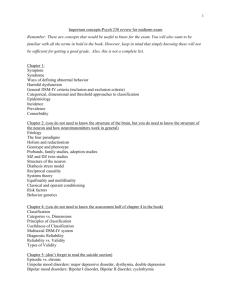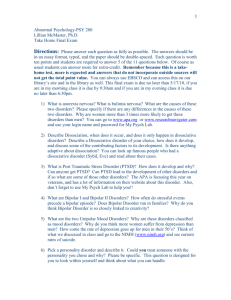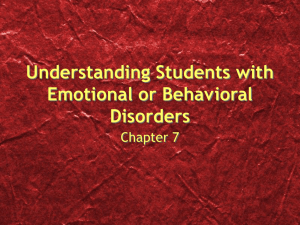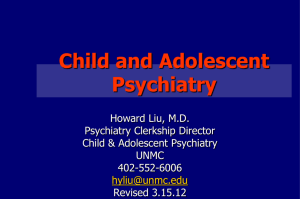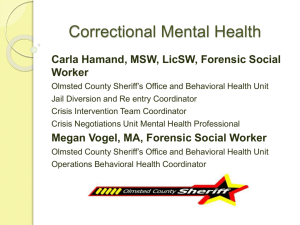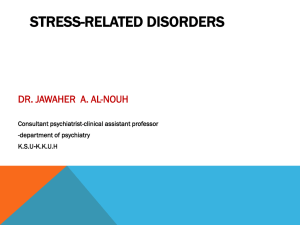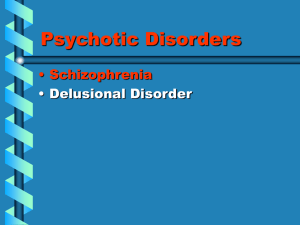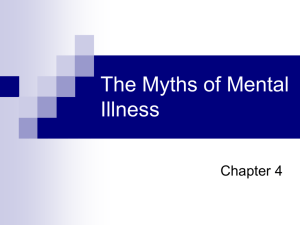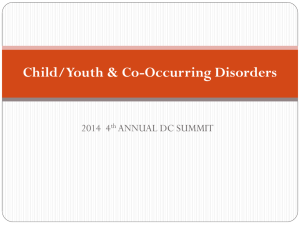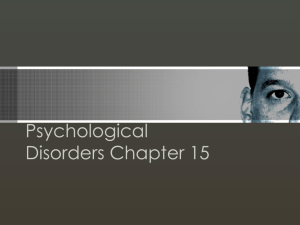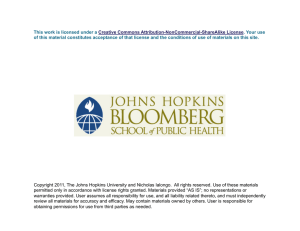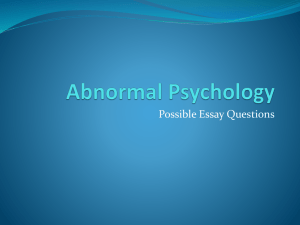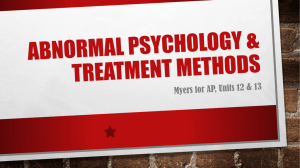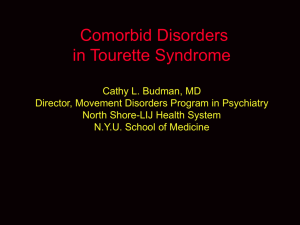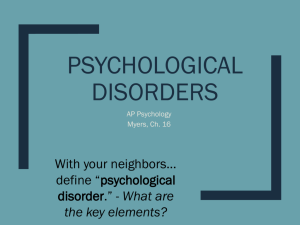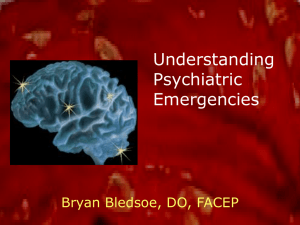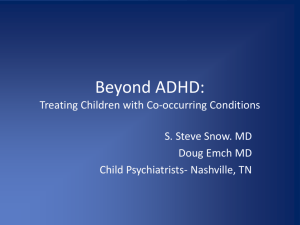Emotional disturbance - Special Education resources
advertisement
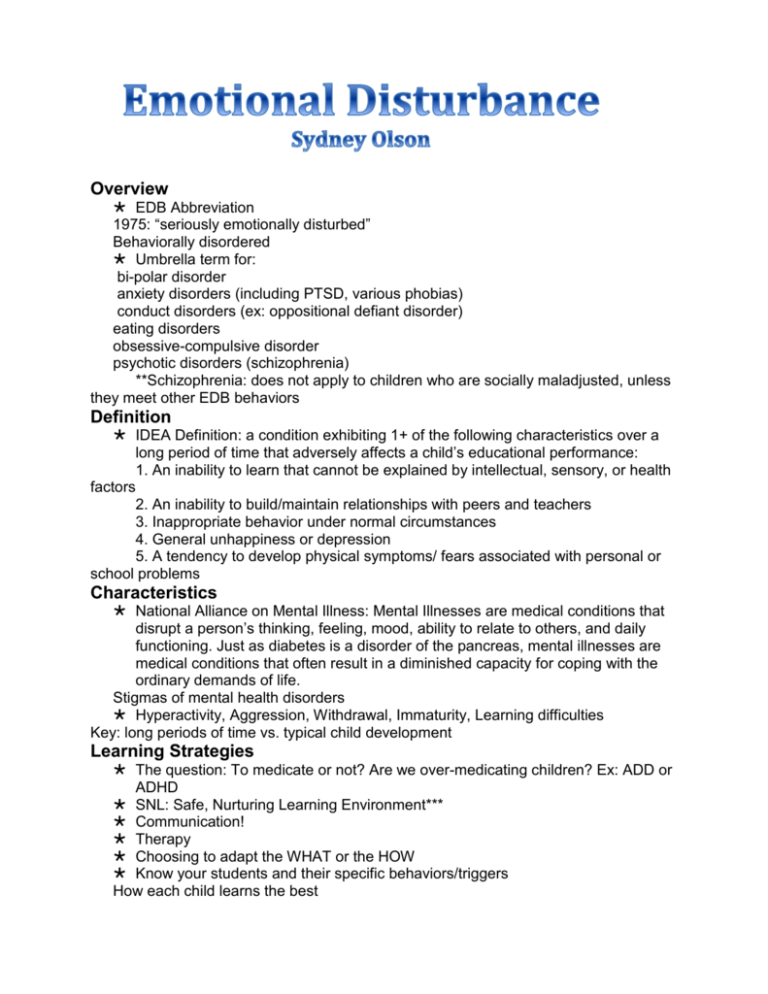
Overview EDB Abbreviation 1975: “seriously emotionally disturbed” Behaviorally disordered Umbrella term for: bi-polar disorder anxiety disorders (including PTSD, various phobias) conduct disorders (ex: oppositional defiant disorder) eating disorders obsessive-compulsive disorder psychotic disorders (schizophrenia) **Schizophrenia: does not apply to children who are socially maladjusted, unless they meet other EDB behaviors Definition IDEA Definition: a condition exhibiting 1+ of the following characteristics over a long period of time that adversely affects a child’s educational performance: 1. An inability to learn that cannot be explained by intellectual, sensory, or health factors 2. An inability to build/maintain relationships with peers and teachers 3. Inappropriate behavior under normal circumstances 4. General unhappiness or depression 5. A tendency to develop physical symptoms/ fears associated with personal or school problems Characteristics National Alliance on Mental Illness: Mental Illnesses are medical conditions that disrupt a person’s thinking, feeling, mood, ability to relate to others, and daily functioning. Just as diabetes is a disorder of the pancreas, mental illnesses are medical conditions that often result in a diminished capacity for coping with the ordinary demands of life. Stigmas of mental health disorders Hyperactivity, Aggression, Withdrawal, Immaturity, Learning difficulties Key: long periods of time vs. typical child development Learning Strategies The question: To medicate or not? Are we over-medicating children? Ex: ADD or ADHD SNL: Safe, Nurturing Learning Environment*** Communication! Therapy Choosing to adapt the WHAT or the HOW Know your students and their specific behaviors/triggers How each child learns the best Resources for Teachers Positive Behavior Support American Psychological Association http://www.apa.org/index.aspx 10 Tips for teaching students with EBD (click on link): http://nichcy.org/teaching-students-with-e-d Helpful Articles about “dealing” with children with EBD https://www.k12.wa.us/SpecialEd/Families/pubdocs/bestpractices.pdf http://cecp.air.org/aft_nea.pdf Interview 1: Special Educator “Each child comes to you in puzzle pieces. It is up to the teacher to figure out the modes to use when teaching them. Oral, tactile, active, passive, peer-tutoring, individual, group, movement, music. Technology has been a great benefit in teaching with carefully selected programs that can hold attention and actually teach with built in rewards.” Mostly worked with children with ADD, ADHD, ODD, PTSD, Bi-Polar Disorder, and Abuse and Neglect Medication seemed to make a positive impact: teachers cannot make a diagnosis but can report observations to a physician Characteristics you saw: Bi-Polar: no two days were ever the same PTSD was usually accompanied with denial or depression PATIENCE Explicitly teach and practice social skills, have someone that can help you Interview 2: Residential Treatment Center Employee Harder to diagnose at an early age and may change overtime Bi-Polar disorder, Anxiety disorders, eating disorders, among many others Common behaviors: difficulty coping in stressful situations, defiance, struggles with interpersonal relationships Need to do what is best for each individual and treat each situation independently from one another Effective therapy: DBT- non judgmental, therapeutic assignments, group, family, and individual therapy Learning strategies: more one-on-one time, planning, and structured activities Ignored and often unnoticed by general population- therapeutic academic assignments would be a great benefit




